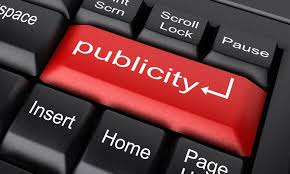 If the key to any small to medium-sized enterprise’s (SME’s) success is advertising, high quality, professional publicity material needs to be within reach.
If the key to any small to medium-sized enterprise’s (SME’s) success is advertising, high quality, professional publicity material needs to be within reach.
Added to this, the cost of producing the necessary brochures and business cards needs to be kept relatively low if a small business is to remain profitable.
Thankfully for small business owners, recent technological advances have made the in-house production of effective, low-cost publicity material much easier to achieve.
The variety of desktop publishing software that is now available, in conjunction with affordable printers, allows SMEs to produce all their advertising material themselves at a reasonable price.
According to Mark Williams, an expert who advises and assists small businesses about desktop publishing, the final product isn’t limited to black and white business cards or monochromatic leaflets, either.
“Depending on the type of printer, you can produce photo-quality glossy brochures, overhead projector transparencies, even T-shirt iron-ons these days,” he says.
He adds that most printers a small business is likely to purchase are of good quality.
“Each have their own strengths and weaknesses, but most are satisfactory if you use them properly and for what they are intended for.”
Acquiring a good printer, however, doesn’t guarantee that publicity material will wow potential clients. Quality software is just as important in self-production of advertising products.
The range of programs available – from specialized suites like Corel Draw and Adobe Illustrator, to basic programs such as MS Publisher and Paintshop – means that virtually any SME should be able to find the right package for its needs.
An even more recent development is digital imaging technology, which enables businesses to jettison photo development and film costs in favor of a digital camera.
Paul Rogers, a senior category manager from Hanimex Pty Ltd., the Australian distributor of Fujifilm products, says there is also an increasing range of printers that can produce top quality photographic prints.
“Photographic quality printers can produce a wide variety of print sizes, from 4″ by 6″ prints through to A3 prints,” he says, adding that the most popular software being used to enhance photographs before printing is Adobe Photoshop.
Rogers adds the caveat that with all new technology, employers should ensure their team members have adequate knowledge of and training in the product before results can be expected.
“Employees definitely need some training,” says Williams. “Otherwise they will work in inefficient ways that they may have learnt in the past, and not use the package to the best of its abilities.”
To facilitate a business’ shift to self-publishing, the following hints are useful:
• For document design, bold and italics can be used to make certain parts of the material stand out.
• The use of templates and a database of regularly used documents such as invoices, payslips and letterheads can also save a business valuable time.
• It is important to remember that with much self-publishing software, minor details of punctuation can mean the difference between a professional product and something which was clearly produced by an amateur.
Therefore, people new to desktop publishing should make sure they understand the difference between, say, an inch mark and an opening and closing quotation.
Usually a good training session and the software’s documentation should explain this.
And when it comes to printing, SME owners should try to avoid design programs which don’t produce the same colors on screen as in hard copy.
Otherwise it can be difficult to accurately predict how material will look in its final version, which can result in disappointment as well as wasted resources.
After all, the focus of the transition from outsourced printing to desktop publishing should be on the quality of the final product – for the sake of the business as well as customer satisfaction.
And, since the highest quality product is the goal, it may be worthwhile considering hiring a graphic arts professional.
Mastering desktop publishing can take time – an expert will be able to ensure that your business’ publicity material continues to impress customers while you develop your own desktop publishing skills.
Copyright 2002, RAN ONE Inc. All rights reserved. Reprinted with permission from www.ranone.com.

 Chris’ combination of academic credentials, career experience and temperament ideally suit his calling as a business development advisor. Clients say he has a mind for business and a heart for service.
Chris’ combination of academic credentials, career experience and temperament ideally suit his calling as a business development advisor. Clients say he has a mind for business and a heart for service.